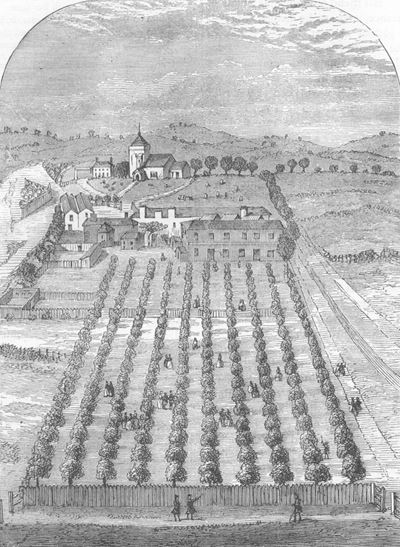
1700
St Pancras featured its own spa and pleasure grounds – the gardens of the Spa were very extensive and laid out with long straight walks. It was stated, in the bills issued by the proprietors that the quality of its waters was ‘surprisingly successful in curing the most obstinate cases of scurvy, kings evil, leprosy, and all other breakings out of the skin’ www.british-history.ac.uk/old-new-london/vol5
Image: St. Pancras Wells and Church in 1700 | © Antiqua Print Gallery / Alamy Stock Photo
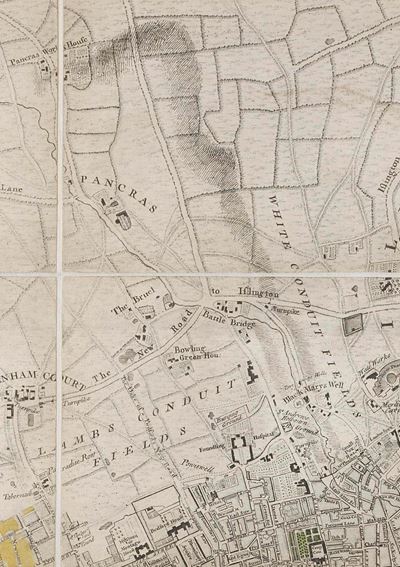
1746
In the late 18th and early 19th century St Pancras was still extensively rural in character. It was a small village with a church and burial grounds. The parish was named after Saint Pancras, a 14-year-old boy who had converted to Christianity and would not renounce his faith. As a result, he was beheaded by Diocletian in Rome in 304AD. He is the patron saint of children. St Pancras is a Greek name meaning ‘the one that holds everything’.
Image: An Exact Survey of the Citys of London, Westminster, ye Borough of Southwark, and the Country near Ten Miles round’ by John Rocque, 1746 | © Museum of London
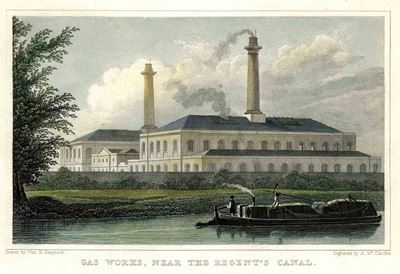
1820
The Regents Canal was built to link the Grand Junction Canal’s Paddington Arm, which opened in 1801, with the Thames at Limehouse. One of the directors of the canal was the famous architect John Nash. Nash was friendly with the Prince Regent, later King George IV, who allowed the use of his name for the project. The Regent’s Canal Act was passed in 1812 and the company was formed to build and operate it. Nash’s assistant, James Morgan, was appointed as the canal’s Engineer. It was opened in two stages, from Paddington to Camden in 1816, and the rest of the canal in 1820.
Image: The Imperial Gas, Light and Coke Company works, St Pancras, engraving by Thomas Shepherd, 1820-1837 | © London Canal Museum www.canalmuseum.org.uk
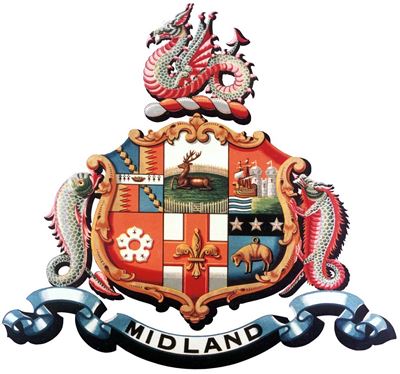
1844
The Midland Railway Company was formed on 10th May 1844 by the merger of Midland Counties Railway, the North Midland Railway, and the Birmingham and Derby Junction Railway and the Birmingham and Gloucester Railway joined two years later.
Its headquarters in Derby at the junctions of the two main routes from London to Scotland put the company in a commanding position which it was soon to build upon.
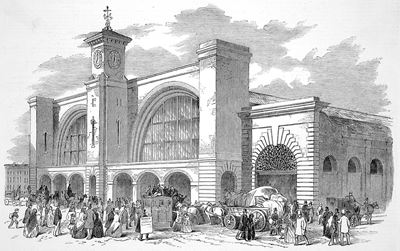
1852
Kings Cross Station opens. Designed by Lewis Cubit it was built between 1851-1852 as the London Hub of the Great Northern Railway. It was constructed on the site of a smallpox hospital and took its name from a monument to King George IV which had been erected nearby but demolished in 1845.
Kings Cross Station 1852 © Mary Evans Picture Library / London Illustrated News
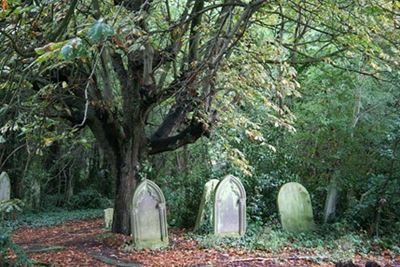
1854
Closure of St. Pancras burial ground. Prior to this date the graveyard had been the favourite burial place of the Catholic Irish. In addition, during the French Revolution the French Catholic refugees who died in London were buried here. The St Pancras & Islington cemetery was opened in its place in East Finchley. This was the first public cemetery in London and followed the passing of the Metropolitan Burials Act 1852. The Cemetery is listed Grade II* in the English Heritage Register of Historic Parks and Garden of Historic Interest (no. 5283).
St Pancras & Isilington Cemetery, East Finchley © Photograph [Public Domain], via Wikimedia Commons, uploaded by Eric Ray
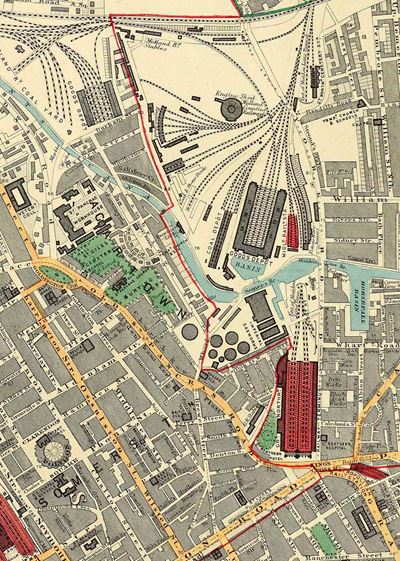
1862
The Midland Railway was keen to access London with goods but it had no direct line of its own, routing its traffic into Euston and then Kings Cross. Follow this link to find out more about how the station came to be built
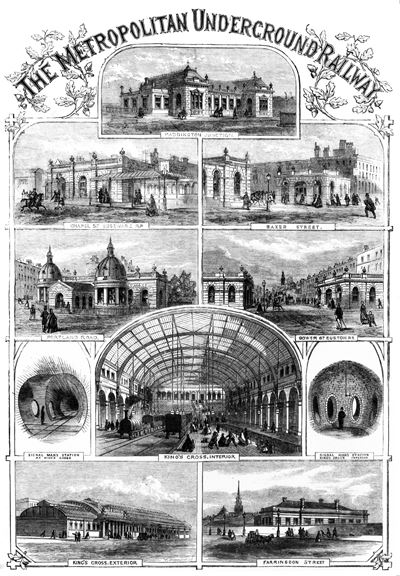
1863
The Metropolitan Underground Railway, the world’s first underground railway began services between Edgware Road and King’s Cross. One of the few constraints the engineer had to consider when designing and building St Pancras, along with to the Euston Road which demarcated the southern most line at which new rail termini could be built (Metropolitan Railway Commissioners 1846), the Regent’s Canal to the north; and the River Fleet to the east..
Later in that same year, Royal Assent was granted for the Midland Railway (Extension to London) Act. Before the 1860s the Midland Railway Company had no direct line into London, routing its traffic via the London and North Western railway to Euston, and from 1858 via a route into Kings Cross station.
Having its own terminus in London was important to the Company’s future expansion programme.
Depiction of the Metropolitan Railway from Illustrated London News Vol 62/2 © Science Museum / Science & Society Picture Library
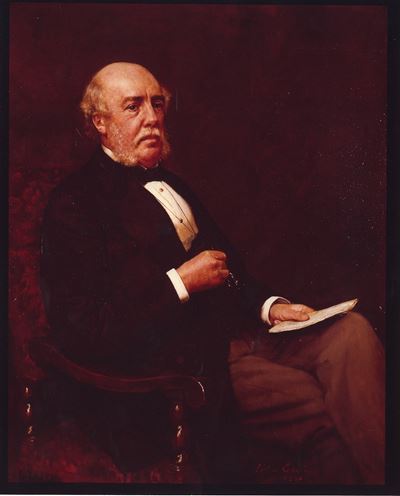
1864
William Henry Barlow, (1812-1902), Chief Engineer to the Midland Railway set out an ambitious four year timetable for the completion of the line to St Pancras. Follow this link to find out more about the People behind St Pancras – people article/ page
William Henry Barlow © Institute of Civil Engineers
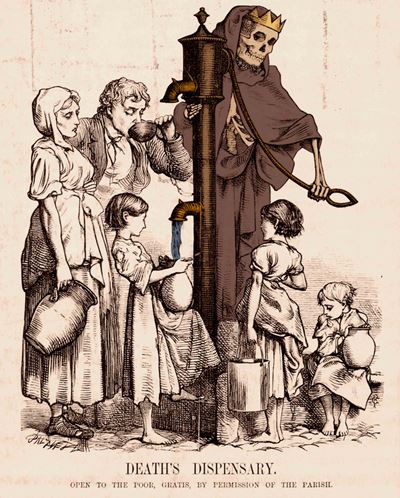
1866
The last major outbreak of cholera to ravage London was particularly bad at St Pancras / Somerstown. London’s rapid growth had not been matched by the developments needed to deal with the huge amount of sewage that was being produced. Sewage was coming into contact with drinking water and contaminating it, and thus the disease spread with ease.
Cartoon depicting the risk to life from polluted water c. 1850 © alamy
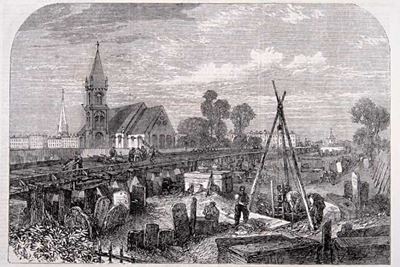
1866
The Midland Railway obtained Parliamentary consent to demolish the remaining houses in Agar Town and build the line into St Pancras station over the land. This required disinterring burials in the St Pancras churchyard. Unfortunately, this was not initially undertaken in a sensitive manner resulting in questions to the Secretary for the Home Department in Parliament about the treatment of the burials. Following this intervention more appropriate measures were put in place.
George Gilbert Scott wins competition to design the St Pancras hotel
Excavation of St Pancras Cemetery during construction of the Midland Line into London © London Metropolitan Archives
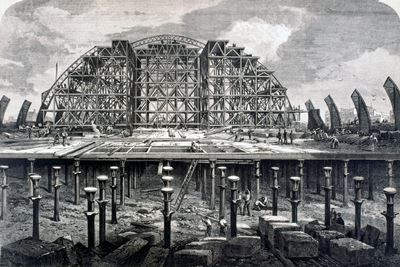
1867
November: The first section of the St Pancras wrought iron roof truss is erected by the Butterley Company of Derby. The brickwork and the foundations are by Waring Brother. Barlow and Ordish’s trainshed is the largest single span enclosed space in the world.
Engraving of the construction of St Pancras Station. The Illustrated Times 1867 © National Railway Museum / Science & Society Picture Library
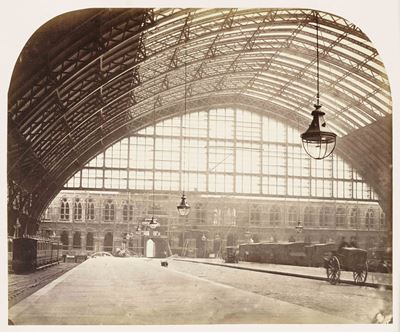
1868
1st October, 4.20am: the first train arrives at St Pancras – the 10.05 overnight mail from Leeds. The station was not fully complete, and the hotel barely started however the trains were running.
The south elevation of the trainshed before the completion of the Midland Grand Hotel 1868 © National Railway Museum / Science & Society Picture Library
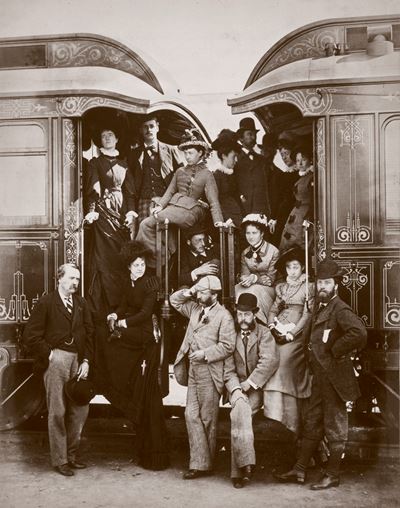
1874
The first Pullman Train in the UK operates on the Midland Railway – this group of wealthy travellers are embarking on a mystery tour.
Wealthy passengers taking a mystery tour from St Pancras on the Pullman service 1876 © National Railway Museum / Science & Society Picture Library
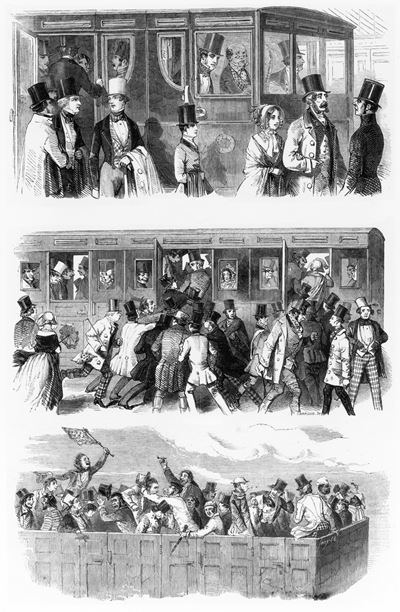
1875
On 1st January 1875 the Midland became the first railway company to run only two classes of travel, first and third. By abolishing second class it provided the quality of second class to third class passengers, thereby rejecting the practice of placing third class passengers in open air wagons.
Engraving showing social distinctions through the division of rail travel into first, second and third class, with first-class passengers in their spacious carriage, the scramble for seats in second class, and an open wagon carrying third class passengers, caricatured here as a rowdy uncouth mob.
‘A day at the races’, Plate from Illustrated London News (Vol. 47/1 p. 328), c 1846. Copyright: National Railway Museum / Science & Society Picture Library
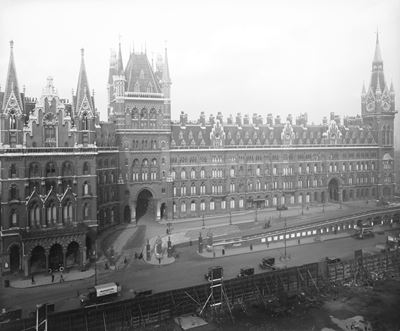
1876
The west wing of the Midland Grand Hotel was completed, following the opening of the East Wing in 1873. The hotel was now fully open for business.
The Midland Grand Hotel, 1925 © National Railway Museum / Science & Society Picture Library
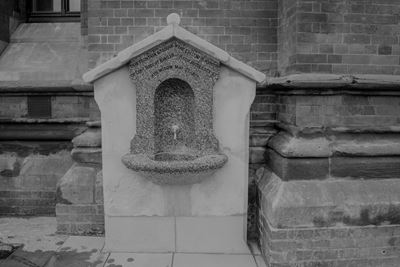
1877
The public drinking fountain was installed at St Pancras, dedicated to Captain Robert Hansler.
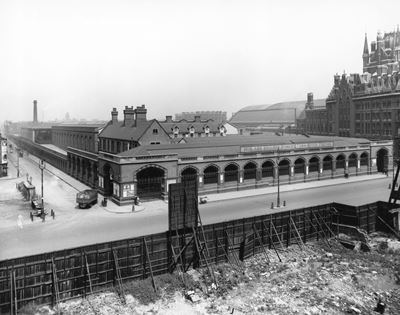
1887
The Somers Town Goods depot adjacent to St Pancras Station was completed. The Midland Railway acquired the site where the British Library stands today for the depot which covered an area of 14 acres and provided storage space for the goods and materials transported on the Midland Railway.
The Somers Town Goods Depot 1922 © National Railway Museum / Science & Society Picture Library
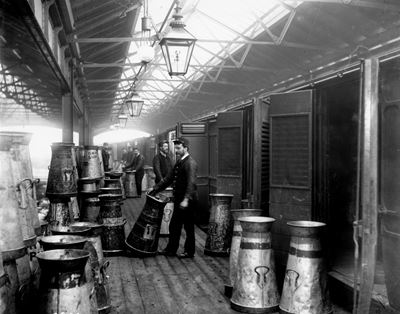
1890
By 1890 the railways were supplying about 50 million gallons of milk to London alone. Milk was being transported into London from the Peak District over 150 miles from St Pancras. One such station was Millers Dale, on what is now the Monsal Trail where farmers would rush their churns to pick up trains for St Pancras where they would be unloaded at the station or in the Somers Town depot and distributed.
Milk churns being umloaded at the Milk & Fish Depot, part of Somers Town Goods depot.
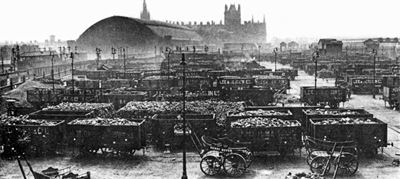
1900
Coal was by far the most important commodity moved by the Midland Railway. By the 1880s the Midland Railway was London's largest supplier of coal and by 1900 was supplying in excess of 2,400,000 tons a year.
Midland Railway’s Somers Town Coal Depot, c.1900. © Mortons Archive
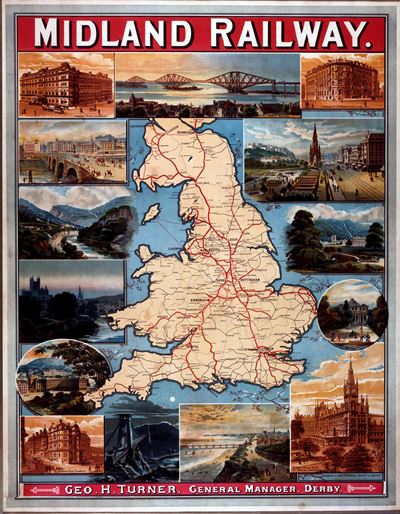
1900
By the first decades of the 20th century the Midland Railway was an empire of travel. In 1901 it owned 1,376 miles of track and 600 stations, carried almost 50 million passengers and employed over 70,000 people.
Poster produced for the Midland Railway Company c.1900 to promote rail travel© National Railway Museum / Science & Society Picture Library
1914
A declaration of war.
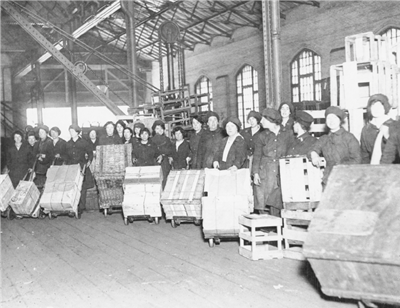
1914-1918
Thousands of ordinary men were called upon to fight for their country, supported by women who took on roles working in factories, railways and serving alongside solider, seamen and airmen as nurses, drivers and cooks. The railway companies were a key part of the war effort.
Female porters transporting crates at Somers Town Goods Depot c.1914-18. Women increasingly took on roles previously restricted to male workers © IWM Q109906
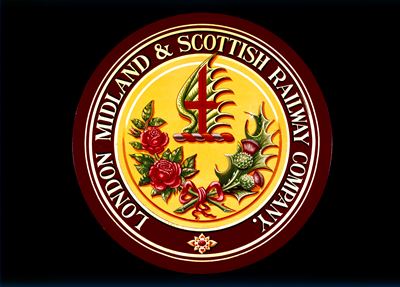
1923
After the war, the railways were not permitted by Government to return to their pre-war competitive positions. Of the four great railways formed in 1923 by the Railways Act of 1921, the London, Midland and Scottish was the largest. It was the only British railway serving England, Scotland, Wales and Ireland
Logo of the London Midland & Scottish Railway Company © National Railway Museum / Science & Society Picture Library
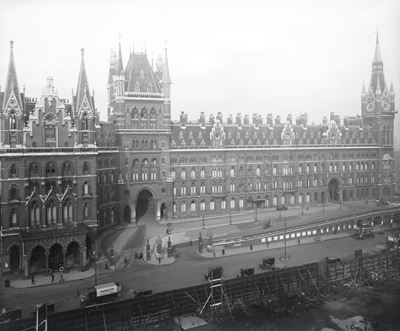
1935
The Midland Grand Hotel closes due to poor profits. It is converted into offices for the London, Midland and Scottish Railway and renamed St Pancras Chambers
The Midland Grand Hotel 1925 © National Railway Museum / Science & Society Picture Library
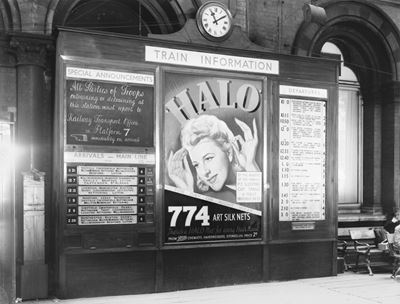
1939
War is declared and the railways are brought under Government control. They were used extensively to carry troops and weapons around the country and to ports. The notice board at St. Pancras gives train information and special announcements to troops. The advert is for ‘Halo’ hair nets.
© National Railway Museum / Science & Society Picture Library
1941
Air raids on the 10th and 11th May 1941 resulted in 5 bombs falling on the station. That night’s raids were some of the heaviest London experienced during the Blitz. Despite the wreckage St. Pancras closed for only one week, whilst platforms 1 & 2 were operational within one month. Fortunately no lives were lost at the station as a consequence of this raid.
Film of bomb damage to train deck (one we edited) – © Imperial War Museum
1945
Evacuation became an enduring memory of the Second World War for many of London’s children. St Pancras was often a starting point for journeys to rural areas believed to be safer than remaining in the city.
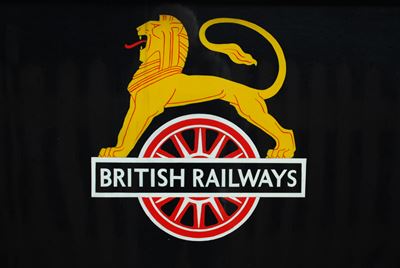
1948
British Railways were nationalized under the British Transport Commission. The first emblem of the company was nicknamed ‘The Lion on a unicycle’
© Hugh Llewelyn
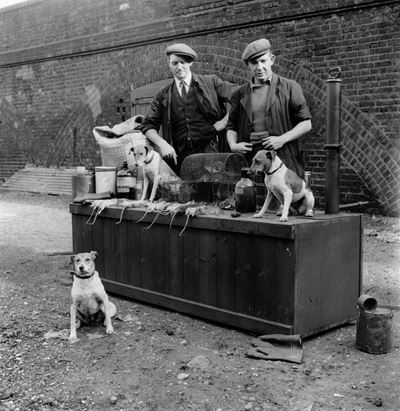
1953
The station and goods depots were an attractive haunt for rats and mice so British Rail employed rat catchers to keep them under control. Jim Forty and Alfred Greenwin are seen here with their dogs, Jill, Sally and Tiny and ‘catch’ at St Pancras Goods yard.
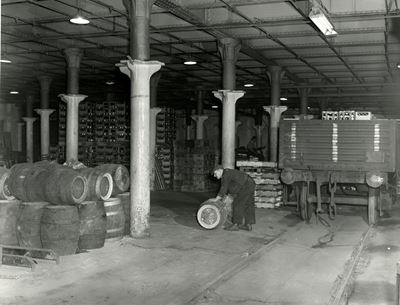
1964
The delivery and storage of beer in the undercroft of St Pancras was a fundamental part of the station design and operation. This activity ceased with the last steam train from Burton on Trent as rail distribution was superceded by road. Follow this link to find out more about beer at St Pancras – Built on Beer
Foreman Alf Lawrence unloading and moving barrels from a rail wagon into storage between the cast iron columns 1958 © National Railway Museum / Science & Society Picture Library
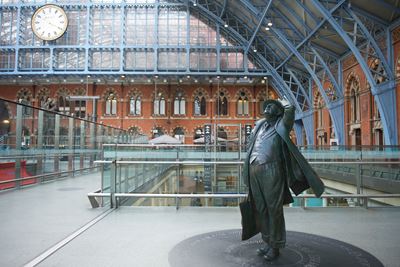
1967
In 1966 British Railways announced their intention to amalgamate Kings Cross and St Pancras to create ‘a single modern terminus’ with ‘only fragments of the original buildings recognisable’. This led to a public outcry and the poet John Betjeman became the figure head behind the public movement that ensured the long term protection of St. Pancras through its Grade I listing in October 1967.
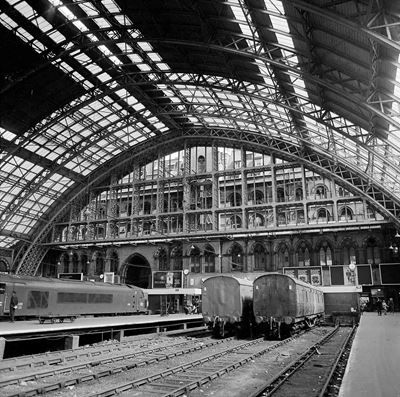
1968
In 1968 British Rail were taking down the original station clock, that had been in place for nearly 100 years and it fell; breaking into many pieces. The pieces were bought by a Midland Railway guard, Roland Hoggard, who transported them back to his home in Nottinghamshire, where over the course of two years he rebuilt the clock on the side of his barn.
St Pancras without its clock 1968 © Historic England
1969
Between 4th-11th May 1969 the Daily Mail Transatlantic Air Race took place. The race was held to mark the 50th anniversary of the first non-stop transatlantic flight, by John Alcock and Arthur Whitten Brown from Newfoundland to Ireland on 14/15 June 1919.
Competitors had to go from the top of the Post Office (now BT) Tower in London to the top of the Empire State Building in New York, in either direction. They could make use of any type or number of transportation provided that they cross the Atlantic by air. The shortest overall time between London and New York was by Squadron Leader Tom Lecky-Thompson, flying a Royal Air Forece Hawker Siddeley Harrier in 6 hours 11 minutes and 57.15 seconds – he flew from Somers Town Goods Yard adjacent to St Pancras (and now the British Library / Francis Crick). His prize was £6000. The shortest time between New York and London was by Lieutenant Commander Peter Goddard in a Royal Nay McDonnell Douglas Phantom in 5 hours and 11 minutes.
The Goods Yard was a temporary but official RAF Station which was established to serve the flight of Tom Lecky-Thompson. RAF St Pancras opened and closed in May 1969
© Imperial War Museum
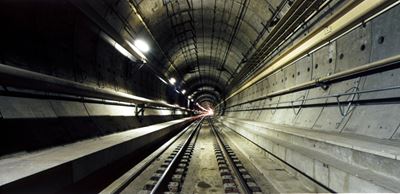
1994
The Channel Tunnel was officially opened by HM Queen Elizabeth II. Royal Assent for the Channel Tunnel Act was granted in 1987.
https://www.getlinkgroup.com/en/our-group/history/
St Pancras was confirmed by the Government as the preferred terminus.
The channel tunnel © Eurotunnel
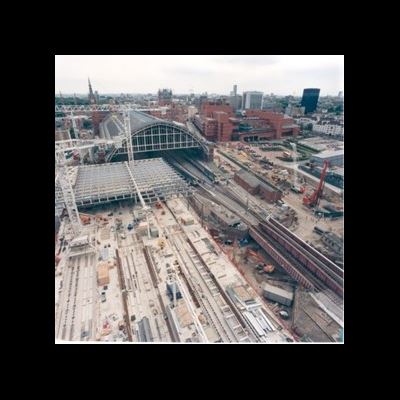
2003
On 9th April the Barlow train shed closed for renovation. Construction started on the main station whilst Midland Mainline services continued to operate from the eastern half of the new St Pancras extension.
Southeastern platforms under construction c.2001
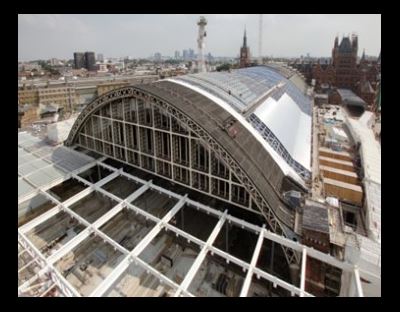
2005
The roof covering of St Pancras was reinstated to its original ridge and furrow glazing with slate tiles fixed to the lower sides.
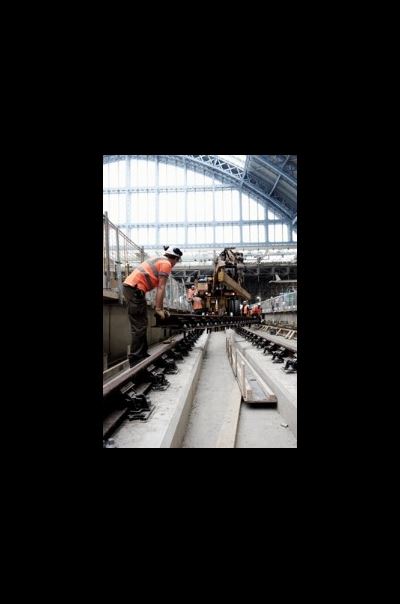
2006
Track laid in the Barlow Shed. Midland mainline services begin to operate from the western part of the extension.
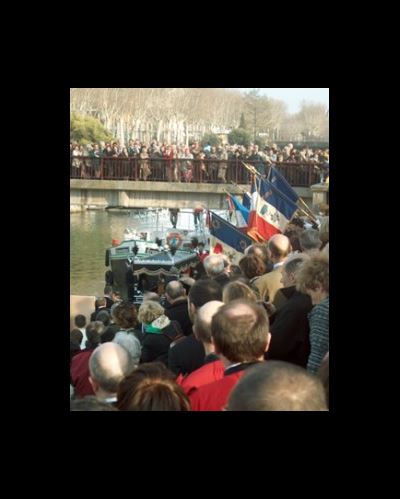
2007
Archbishop Richard Arthur Dillon (died 1806) an exile from the French Revolution, was returned to France and reinterred in Narbonne, France after exhumation of his coffin in St Pancras churchyard during the construction works. The coffin was conveyed along the Canal de la Robine, a fitting tribute as Mgr Dillon was instrumental in its original construction.
Monsignor Dillon on his return to Narbonne © P Emery
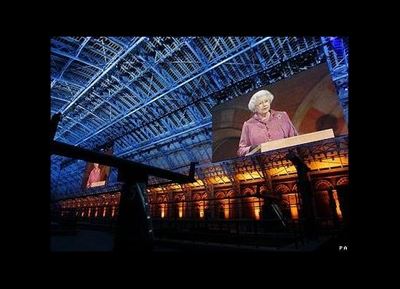
2007
The works were complete and St Pancras Station and the high speed line are operational.
St Pancras Station is officially opened by HM Queen Elizabeth II on 6 November.
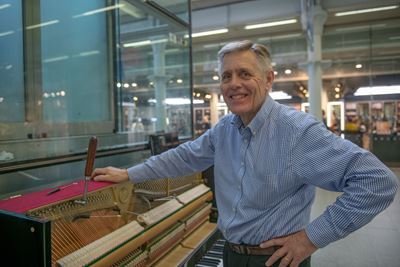
2012
First introduced in 2012, our pianos have been extremely popular with amateurs and professionals alike keeping station visitors entertained. This wouldn’t be possible without Richard Lewis, the station's piano tuner, keeping them in tune.
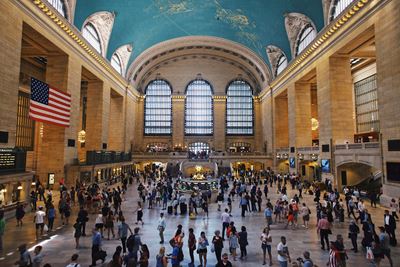
2014
On 14th May 2014 St. Pancras International was twinned with Grand Central Station in New York, the first transatlantic station twinning agreement. The partnership offers opportunities for shared learning between stations with similar histories.
2018
140-year-old public drinking fountain restored at St Pancras International.
A Victorian drinking fountain which provided clean drinking water to Londoners in the 1870s reopened for public use at St Pancras International in May 2018, after extensive restoration by the station’s owners.
2018
St. Pancras turns 150 years old.
On 1st October 2018 St Pancras International teamed up with prestigious Parisian culinary experts, Le Cordon Bleu, to reveal a giant Birthday cake, which is inspired by the iconic destination, to celebrate the station’s 150th birthday. Lucky people who attended the station’s special cake cutting ceremony in the evening also had a chance to try some cake.
2018
St. Pancras station and the railway played a major part in both world wars. On 8th November 2018 a permanent war memorial was unveiled at St. Pancras. This is a look back through history as we remember those employees from St. Pancras station, hotel and goods yard who did not return from conflict.
